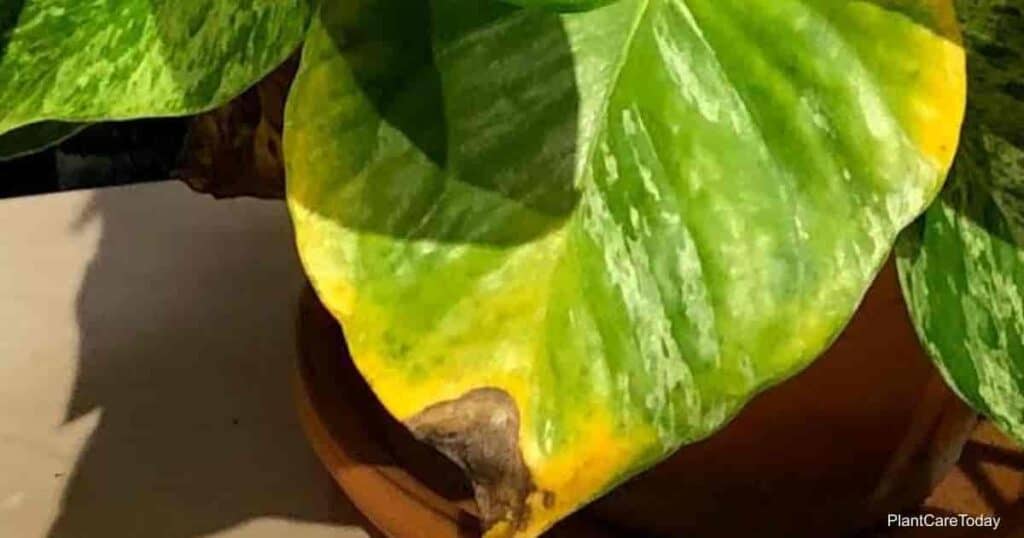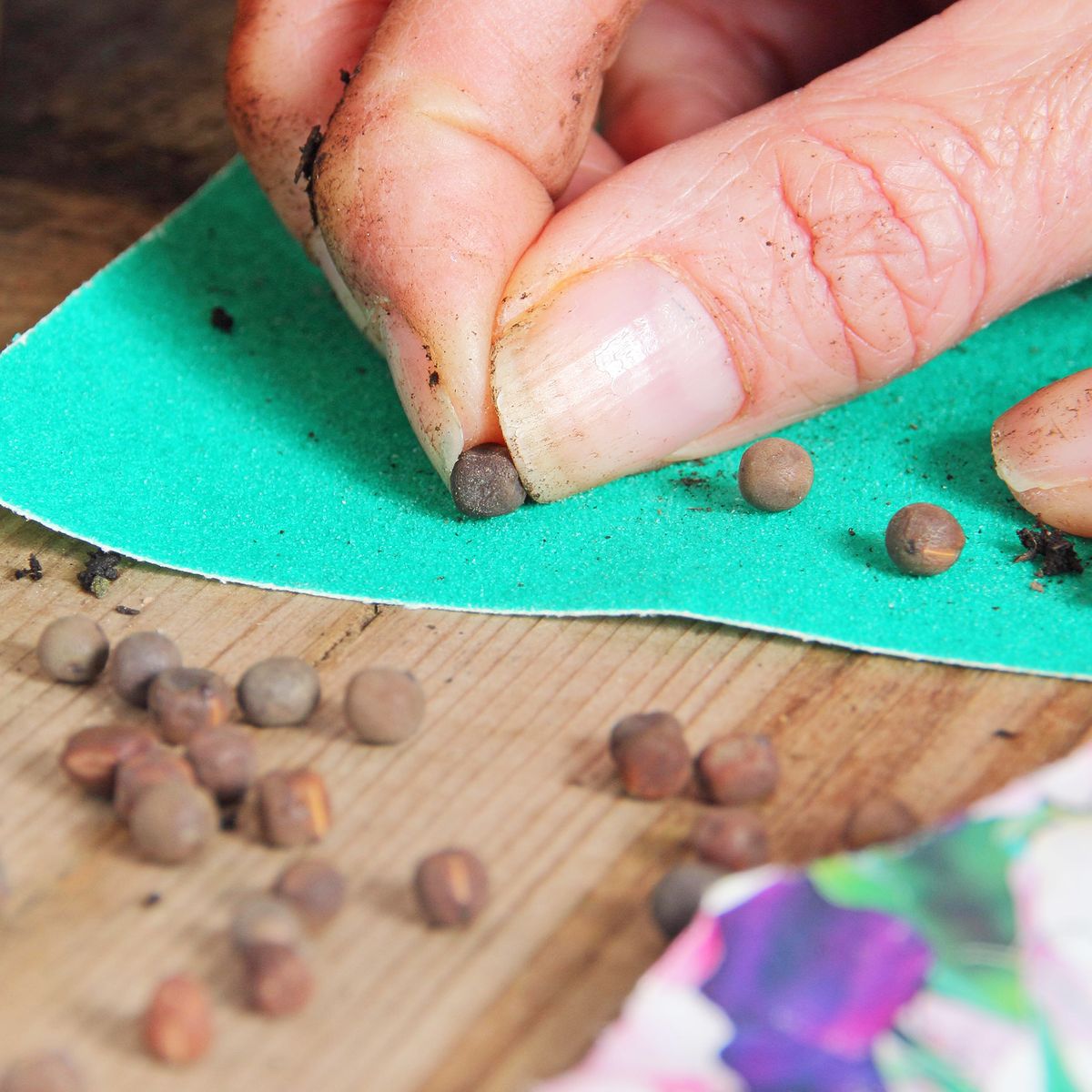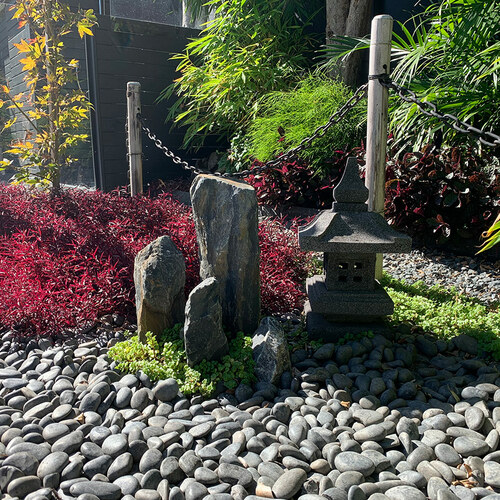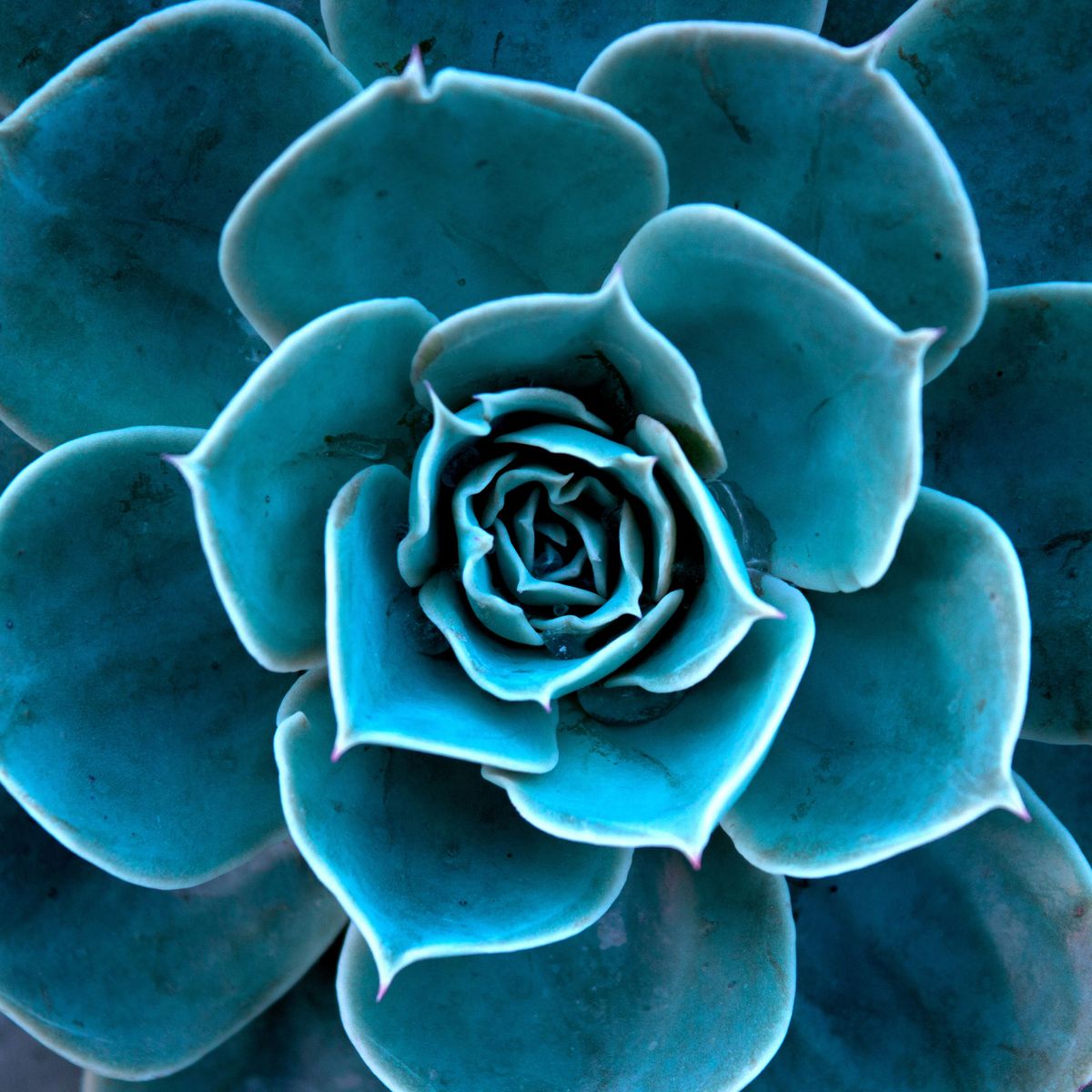There are 15 species of pothos, all of which are easy-care climbing and trailing members of the Araceae family of plants.
They come from tropical and semi-tropical western Pacific and Southeast Asia jungles. For this reason, they are mostly happy in any standard household setting.
But occasionally, something goes amiss, and brown spots on leaves result.
Brown spots on pothos and other plants are a common symptom of various ills.
If your pothos plant has brown spots, it may indicate any of the following:
- The plant has taken a chill.
- It’s getting too much sun.
- It isn’t getting enough humidity.
- You aren’t watering it right.
- Your plant has too much fertilizer.
- You have an insect infestation.
You can be sure that it’s time to review your care habits and do some detective work.
Different Factors That Cause Brown Spots on Pothos
Incorrect Lighting
These jungle dwellers do best with bright, indirect sunlight. They can do well in a shady setting, but if you have a variegated pothos, it may lose variegation in low light.
But if you expose any pothos to excessive, bright, direct sunlight, you risk burning the leaves. This will cause brown spots and streaks.
Review your plants’ light exposure. Is there harsh sunlight at some point during the day? If so, shade it or move it to give it some protection.
Trim off the burned leaves with a sharp, sterile cutting tool. Your plant should recover quickly and present you with new growth.
Lack Of Humidity And Harsh Drafts
Remember that your pothos is naturally a jungle dweller, so it likes humidity and a sheltered setting. So mist your plant daily or use a humidifier in the room where you keep your plants.
If your pothos is a tabletop plant (as opposed to a hanging basket plant), set its container on a pebble tray with a bit of water in the bottom. As the water evaporates, it will humidify the air around the plant.
Be sure to protect your pothos from harsh hot or cold drafts. Allow the air to circulate around your plants gently. Never allow your pothos (or any other plant) to sit directly in front of a heater or air conditioner.
Also, your plant should be well away from open windows that allow drafts or doors or frequently used doors.
Extreme Temperatures
Pothos likes consistently warm temperatures ranging from 70° to 90° degrees Fahrenheit.
It can tolerate nighttime temperatures down to 65° degrees Fahrenheit, but not much lower.
If you expose your plant to frigid temperatures for even a brief time, its leaves will likely wither and turn brown.
If the roots have not frozen, you can probably revive your plant. Here’s how to do it:
- Cut away the damaged foliage.
- Place the pot in a warm area that receives bright, indirect sunlight.
- Care for it as usual, and it should rally.
Exposure to temperatures over 90° degrees Fahrenheit will dry out and desiccate the plants’ leaves.
Again, if the exposure is brief and the roots remain moist, you can probably revive the plant. Trim away the damaged leaves and provide gentle, consistent care.
Incorrect Watering
When watering pothos too much water can lead to root and stem rot, which leads to soft brown spots and dead leaves. Too little watering leads to dry, desiccated brown leaves.
It is best to use the soak-and-dry watering method, wherein you allow the soil to become relatively dry and then provide a thorough soaking.
This allows the plant to take in plenty of water while allowing ample air circulation in the potting medium.
If your plant is suffering from a lack of water, do the following:
- Cut away the damaged leaves and give them a good soaking.
- Allow the pot to sit in a container of room temperature water for half an hour or so.
- Then, remove the pot from the tub and allow excess moisture to drain off.
- Never leave your plant sitting in water in an ongoing manner as this causes root rot.
If root rot is the root cause of the brown spots, you may be able to revive the plant.
Repot it into a fresh, light, airy potting medium in a new or sterilized container.
When you repot, trim away soft, rotten roots and damaged foliage with a very sharp, sterile tool.
Allow the plant to rest in a covered, airy setting to dry out before repotting.
When trimming the plant, look for a couple of healthy cuttings to take and pot separately in case the parent plant doesn’t survive.
Too Much Fertilizer
Pothos is not a heavy feeder. Excessive pothos fertilizer will cause salt buildup, which can lead to brown spots.
If you see salt buildup on the surface of the soil, this is most likely the cause of your problem.
When this happens, you may be able to save your plant by doing the following:
- Flush the soil with fresh distilled water.
- Then, allow the water to run through the drainage holes to wash the salt out.
- Once done, allow the soil to become nearly dry before watering again.
If it’s time to repot, you can remedy your excessive fertilizer problem by moving your plant to a new pot with fresh potting mix.
When you do, examine and trim the roots as needed.
In any event, trim away damaged stems and leaves. They will soon be replaced with new growth.
To avoid this problem, only fertilize during the growing season (spring and summer).
Fertilize once a month with a half-strength dose of a good quality general houseplant fertilizer.
Note that fertilizing may not be necessary if you repot using fresh potting soil every spring.
Insect Pests
Any environmental imbalance can make your pothos more susceptible to infestation by insect pests such as mealybugs and spider mites.
Examples of these imbalances are:
- Wrong light
- Poor watering habits
- Temperature fluctuations
- Incorrect humidity levels)
If this happens, you may be able to blast the pests off the plants with a strong stream of water in the kitchen sink or shower.
You’ll need to repeat the treatment several times to be sure of getting all the pests and their offspring. Otherwise, they will emerge from eggs even after blasting the plant.
You’ll also need to use a robust detergent solution to clean the area where your plants stay. This will take care of stragglers and their eggs.
Another option is to mist your plants with a mild pesticide solution, such as Permethrin. This is a reasonably safe option for indoor use, and most plants (including pothos) tolerate it well.
Here’s how to do it:
- Use a 10% percent concentrate and mix it up at a rate of a teaspoonful per quart of water.
- Then, mist your plants every 2 or 3 days for a couple of weeks to ensure all pests and their offspring are gone.
In either scenario, trim away damaged stems and leaves after treating the plant.
It’s worth noting that, because pothos is so easy to grow from cuttings, sometimes you are better off repotting a few cuttings. Then, clean them well, and dispose of pest-infested plants, pots, soil, etc.
When doing this, you can thoroughly de-bug your plant area and start fresh. Good plant care is powerful prevention against insect pests.
Further, prevent infestation by adding a few drops of Neem oil to your plant sprayer and mist with this once a week.
Wipe the leaves with a paper towel or soft cloth afterward to clean away dust and impart a bit of shine.
Good Plant Care Prevents Brown Leaf Spots On Pothos
Again, pothos is a very easy-care plant that should be happy and healthy in almost any standard home environment.
If your home is at a comfortable temperature, your plant is well placed, and you water and fertilize correctly, you should not have any problems. Follow the advice presented here to avoid and deal with brown spots on pothos leaves.












